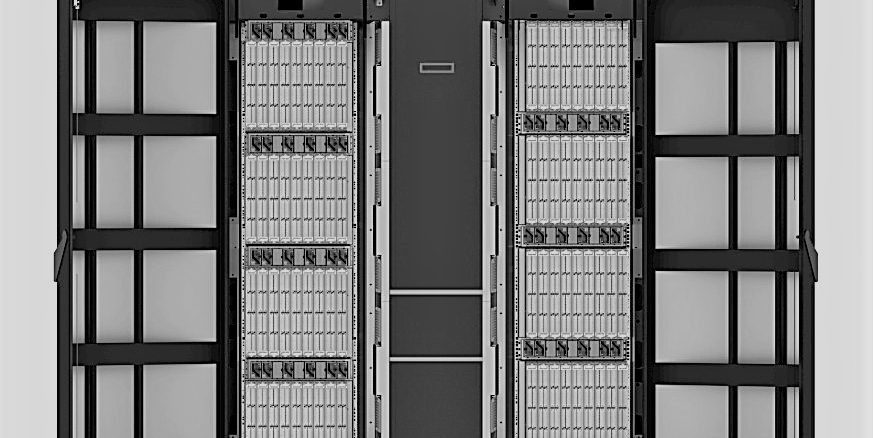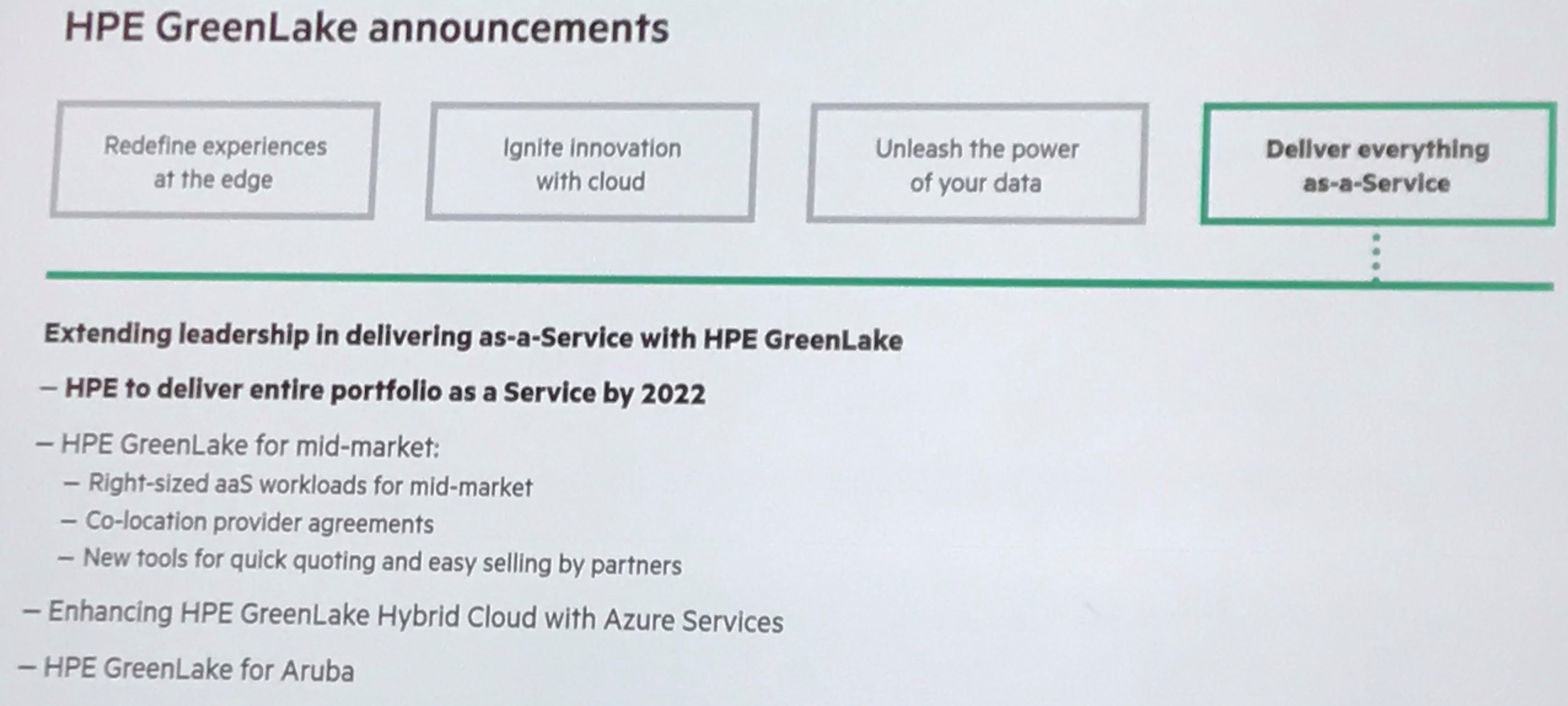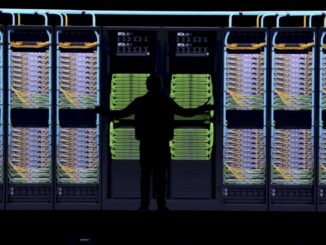
The public cloud has given enterprises a taste of infrastructure that is highly agile and scalable, that is deployed and managed by someone else and that can be paid for based on the resources use, and now they increasingly are looking for tech vendors to give them a similar experience with their on-premises and hybrid cloud environments.
Almost a decade ago, Hewlett Packard Enterprise began moving in this direction with its Flex Capacity program, which covered some of the ProLiant servers in its portfolio and offered them to customers on a subscription basis. The giant OEM has evolved its efforts with its GreenLake cloud-like consumption model, essentially delivering hardware and management software in an as-a-service model. As we have noted here at The Next Platform, GreenLake took a significant step forward at HPE’s Discover event last year with the launch of a hybrid cloud offering with virtualized ProLiant servers to run and manage their workloads both on-premises and in public clouds like Microsoft Azure, Amazon Web Services (AWS) and, most recently, Google Cloud Platform and its Anthos on-premises Kubernetes platform.
The company says customers are embracing GreenLake. In the most recent financial quarter, GreenLake sales jumped 39 percent, its largest ever, and has a renewal rate of 99 percent. There are 600 customers, the GreenLake channel business jumped 275 percent in the last quarter and more than 400 channel partners are selling it. Citing Forrester numbers, HPE said customers can see 30 percent in savings in capital expenditures by eliminating the need to overprovision their infrastructures, a 65 percent drop in the time it takes to deploy IT projects and a 90 percent drop in support and professional services costs.
HPE is not the only vendor looking to offer customers products on a consumption-based model. Dell EMC has its Flex on Demand infrastructure consumption services, and customers of enterprise software giant SAP can get products, including the SAP HANA in-memory solution, via a similar model.
Now HPE wants to aggressively expand the reach of its consumption-based model. At its Discover 2019 show this week in Las Vegas, the company laid out an initiative to offer its entire portfolio as-a-service by 2022, giving customers a choice of using and paying for the vendor’s products through the traditional method or via the GreenLake pay-as-you-go model. The effort will entail not only extending GreenLake throughout the portfolio, but also driving it into new markets and use cases as well as leveraging its vast partner ecosystem to expand its reach in the industry.
The move has more to do than simply changing the way enterprises pay for on-premises infrastructure, according to Pradeep Kumar, senior vice president and general manager of HPE’s PointNext services business, the controlling unit for GreenLake.
“Yes, it’s a change in the business model,” Kumar said during a press briefing at the Discover event. “However, there’s a lot more to GreenLake. GreenLake really is more about finding that experience that is very similar to what you would get out of the public cloud. They’re buying it because they want a change, but they’re also buying it for the experience. They’re not just buying a product-as-a-service, they’re buying an experience. The difference compared with AWS is that GreenLake really gives you choice.”
The plan is to start driving GreenLake into new areas. A key area is the midmarket and SMB space, where HPE is now offering preconfigured solutions that include compute, storage, networking, virtualization and software as well as partnering with colocation services companies Equinix and CyrusOne that can run GreenLake in their datacenters. There also are tools that will make it easier to sell GreenLake services via the channel, a key avenue for pushing the technology down the ladder.
Selling into the midmarket will be different than doing so in the enterprise, an area where HPE has been a dominant player. With enterprises, there is a high degree of customization – they tell HPE what they need and the vendor pulls together an environment to meet those demands. However, that doesn’t scale for the midmarket.
“The midmarket buys it differently,” Kumar said. “It doesn’t have a lot of customization. They want standardization. They want quick answers to things and they want to be able to use it.”
“The key to that is moving from something that is custom-designed, custom-built and custom-architected to something that is based on building blocks,” Paul Hunter, worldwide partners sales leader at HPE, told journalists and analysts. “Having it based on building blocks means that our [midmarket and SMB] customers can digest it more easily and we’re furthering enabling them so they can take the opportunity to contract in a much faster time. We’re expanding down into the market.”
The interest in hybrid cloud is wide-ranging, according to Fred Holloway, vice president of sales at CyrusOne.
“The conversations we have with large enterprises every day are not just about what kind of a footprint they’re going to take in the datacenter,” Holloway told reporters. “It’s about that for certain workloads, but the conversation is more and more around what other options are available to us to run out workloads more efficiently and with higher performance. There’s this whole hybrid conversation that’s happening now.”
HPE also is pushing GreenLake out to the edge through its Aruba Networks business, offering a new network-as-a-service (NaaS) that envelopes an array of Aruba networking offerings, including enterprise WiFi, edge switching, security and analytics. In addition, HPE also is expanding its work with Google Cloud. HPE in April announced Validated Designs for hybrid clouds via a collaboration with Google Cloud and now is offering a hybrid cloud for containers that can be delivered as a service via GreenLake. The partnership also will include advisory and professional services.
The hybrid cloud service combines Google Cloud’s Anthos on-premises platform and GreenLake, including ProLiant compute and Nimble storage. In the third quarter, HPE’s Cloud Volumes will bring a storage service to Google Cloud and other public clouds.
The move to a cloud-like experience is forcing a change not only in how customers consume infrastructure and software but also how vendors operate and sell, particularly as they shift from one-time sales with immediate returns to a more recurring-revenue model. Kumar spoke about a necessary cultural shift within the company and a change in parts of the supply chain to be able to respond quickly to customer demands.
HPE also is continuing to look at what it wants to offer as-a-service in the future.
“We’re looking at all of the things our customers might be interested in,” Kumar said. “The workload-as-a-service everybody wants, backup-as-a-service everybody wants, SAP HANA-as-a-service people want. There are sweet spots that we are really working on. Then there are some that are niche that are coming up. At the moment, we keep on adding to the availability. Our main thing is to convert customers into the consumption model and then look for the areas to add and increase the umbrella of partnerships that you need. We’re going to just keep adding to the stack, vertically and horizontally.”
He noted the NaaS offering through Aruba, adding that HPE has created an edge-as-a-service offering that will be announced in a couple of months.






Be the first to comment